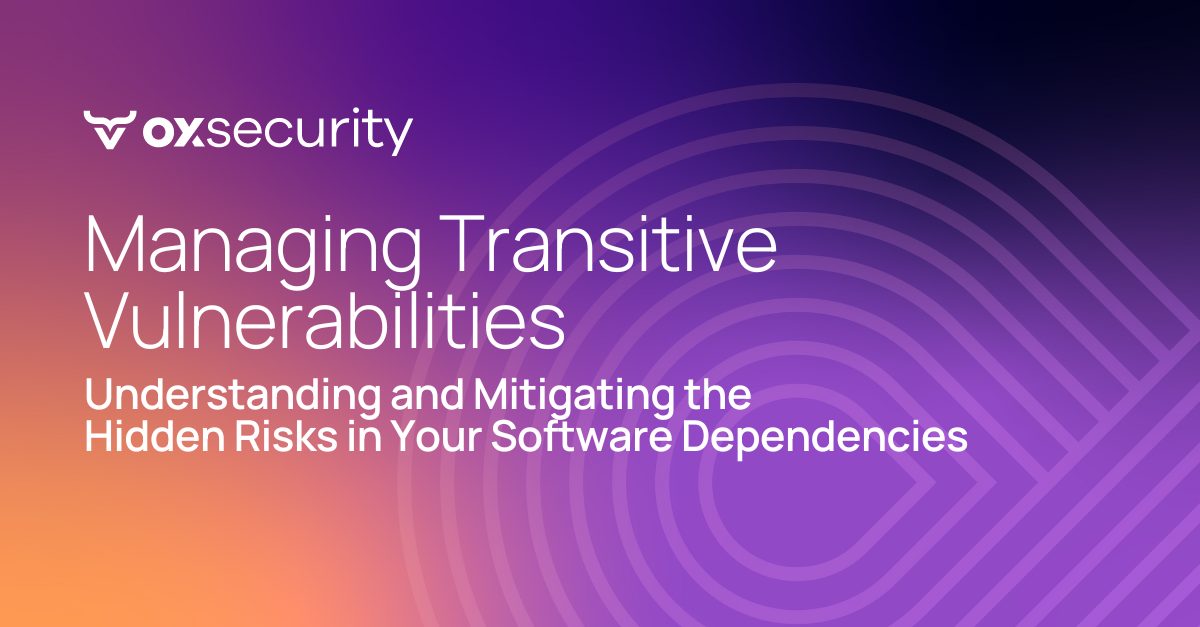Transitive vulnerabilities are developers’ most hated type of security issue, and for good reason. It’s complicated enough to monitor for and fix direct vulnerabilities throughout the software development lifecycle (SDLC). When software is dependent on third-, fourth-, and Nth-party components (and most software is), the longtail of risk can seem endless.
To understand transitive vulnerabilities, it’s important to first understand how these vulnerabilities can arise. In this case, issues can stem from transitive dependencies. In the world of software development, a transitive dependency is an indirect dependency created when software components — be they code, codebases, development environments, or tools that help with the delegation of development tasks — are reliant on the component’s components.
Example of a Transitive Vulnerability
A real-world example might look something like this:
In a JavaScript project using npm:
- Package A is installed.
- Package A’s package.json specifies a dependency on Package B.
- Package B’s package.json specifies a dependency on Package C.
Package C is the transitive dependency of Package A because it relies on Package B, which relies on Package A.
If you’ve been in or near a development environment for any length of time, you know how complicated software can be. This complexity makes software an increasingly attractive target for cyber exploits. More and more, threat actors are zeroing in on vulnerabilities in software as a gateway for large-scale compromises. As the list of transitive dependencies in software grows, so do the vulnerabilities — because they can be introduced at any point along the line.
Quantifying the Risk and Strategies for Mitigation
Comprehending the sheer scale of risk posed by transitive vulnerabilities is crucial. Research has shown that the prevalence of exploitable transitive dependencies in applications is alarmingly high. These dependencies exponentially increase the risk potential because they can introduce vulnerabilities that are often overlooked until they are exploited.
Mitigating these risks involves several strategies:
- Inventory and Monitoring: Maintain a comprehensive inventory of all dependencies, including transitive ones. Continuous monitoring tools can help in identifying new vulnerabilities as they emerge.
- Dependency Management: Regularly update dependencies to their latest versions to minimize known vulnerabilities.
- Code Reviews and Audits: Conduct thorough code reviews and security audits focusing on dependencies.
- Automation: Use automated tools to scan for vulnerabilities in dependencies and automate the process of applying patches.
The Adversary Perspective
Understanding the adversary’s perspective is crucial to effective risk management. Adversaries often target the weakest link in the chain, which is frequently a transitive dependency. By analyzing the skill sets and motivations of these attackers, organizations can better anticipate potential threats and develop more robust defenses.
Practical Strategies to Address Transitive Vulnerabilities
Hands-on strategies are essential for identifying and prioritizing remediation of transitive dependency risks. Techniques such as threat modeling, dependency graph analysis, and sandbox testing can provide deeper insights into potential vulnerabilities and their impacts.
On Thursday, June 27 at OWASP Global AppSec Lisbon 2024, OX Security researchers Eyal Paz, VP of Research, and Liad Cohen, Data Scientist, will be presenting:
Transitive Vulnerabilities Exploit in Real-Life
- 2:15 PM – 3:00 PM
- Auditorium II-CCL
- Defender Track
Attendees will hear an analysis of adversaries’ skill sets and motivations, and why understanding the adversary perspective is crucial to risk management. Attendees will also learn hands-on practical strategies that can be used to identify transitive dependency risks and prioritize remediation.
In what’s sure to be a highlight of the talk, the speakers will demonstrate a proof of concept (PoC) exploit for a real-world transitive dependency in which they will show how an attacker can exploit a vulnerable transitive dependency to compromise an application.
Can’t be there in person but want to learn more? Don’t worry, our next blog will be a deep dive of the session. You can also schedule a demo and in comments share you want to learn more about transitive vulnerabilities.






